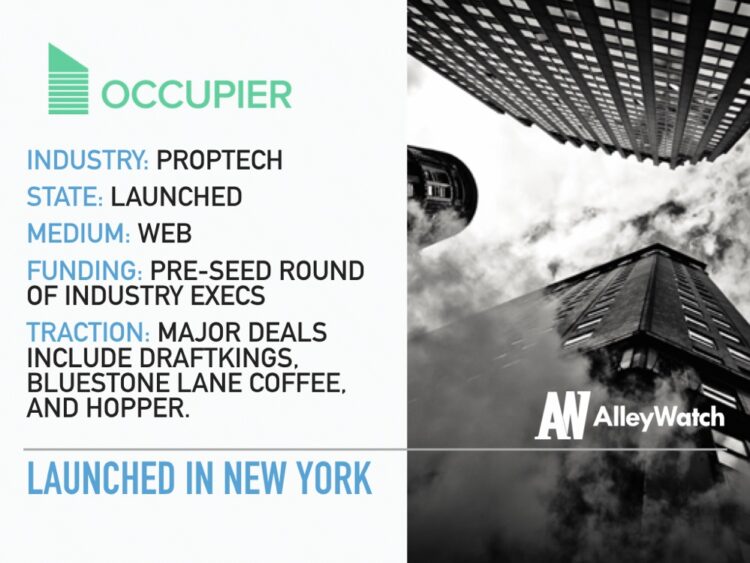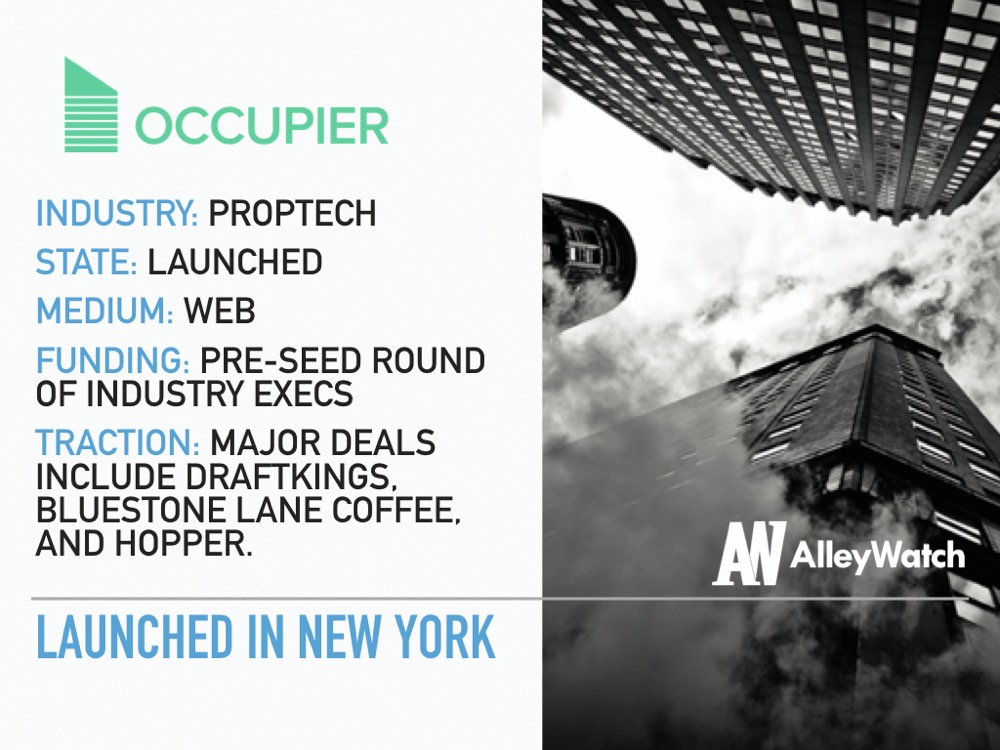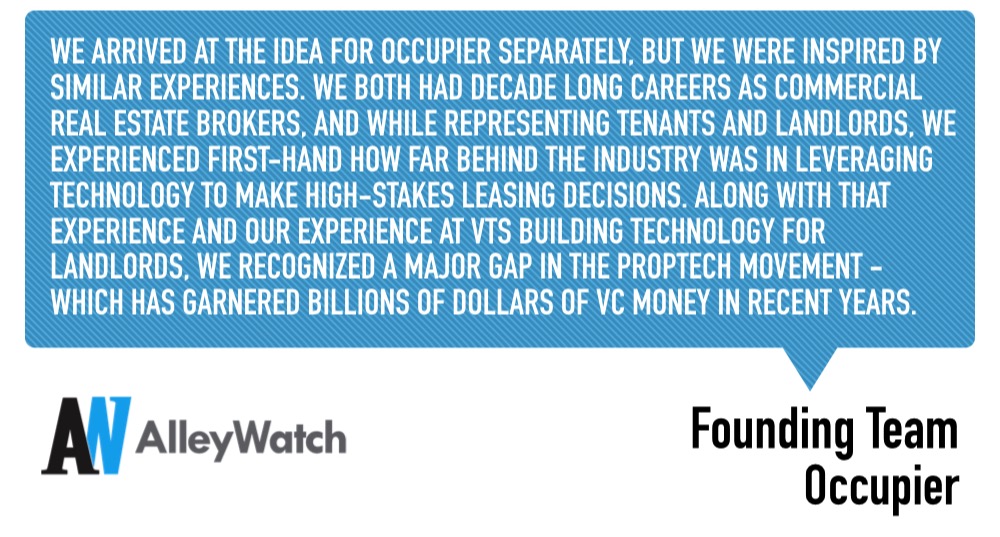Time is money, and any lapse in communications can cost the real estate market hundreds of thousands of dollars when orchestrating large lease deals. Occupier has built a centralized communications platform that connects all of the key stakeholders in real estate deal transactions such as executive teams, business unit leads, brokers, architects, and attorneys, allowing them to collaborate in real-time. While commercial brokers, building owners, and developers have long utilized technology to manage transactions, there has not been a tool tailored specifically for the needs of tenants in a transaction. Outside of transactions, the platform offers portfolio-level management tools so that multisite tenants can manage their real estate holdings and leases in a single place. Occupier was founded by early ex-VTS employees in the summer of 2018.
AlleyWatch spoke with cofounders Andrew Flint and Matt Giffune about how their inspiration for Occupier.
Tell us about the product or service that Occupier offers.
We built Occupier because the way that companies depend on real estate has evolved dramatically over the years, however, the tools they use to manage their real estate portfolios and make decisions, hasn’t.
People have been relying on Excel, email and antiquated systems that just don’t facilitate how people work and communicate in 2019.
Occupier changes all of that by delivering easy to use technology that connects all of the relevant stakeholders involved in managing a portfolio and making important real estate decisions. That is not just the director of real estate, but executive teams, business unit leads, brokers, architects, and attorneys. How these people communicate and work around the most critical portfolio information or transaction process from planning through execution and move-in is centralized within Occupier and accessible anywhere.
Your deals, tasks, documents, critical portfolio details and dates, all in one place – easily accessible by all stakeholders involved. Our customers love Occupier because it helps their teams connect with each other, stay organized, and be more agile in how they execute their real estate strategy.
How is Occupier different?
It is not a database with thousands of fields that looks like it was built in 1998. It is not a closed system that creates friction throughout the leasing process. Instead, Occupier is an aesthetically pleasing and easy to use web-based platform that replaces duplicative processes and augments a team’s capabilities, facilitating the multitude of people that need to play a role in how a company uses real estate, arguably the most important component of a business.
What market does Occupier target and how big is it?
Occupier serves any business that occupies a multi-location real estate portfolio for office, retail or industrial space. Whether you are an online retailer delivering a product through a network of distribution facilities, an office user catering to how people work and communicate in today’s world, or a retailer adapting to the changing needs of the consumer, Occupier helps align what is typically the 2nd to 3rd largest expense any company incurs with the changing dynamics of their business. We estimate there are 80,000 businesses in the U.S. alone that occupy multiple locations.
What is the business model?
Occupier customers engage on an annual subscription basis. Pricing is based on portfolio size and is designed around not just a companies real estate team but other key stakeholders including brokers, project managers and others involved in executing a real estate strategy.
What inspired the start of Occupier?
We arrived at the idea for Occupier separately but inspired by similar experiences. We both had decade long careers as commercial real estate brokers where we represented tenants and landlords, experiencing how far behind the industry was in leveraging technology to make high-stakes leasing decisions. Through that experience along with our experience at VTS building technology for landlords, we saw a major gap in the Proptech movement which has garnered billions of dollars of VC money in recent years. We kept thinking that if landlords were using modern technology to make better decisions, why weren’t tenants doing the same? Given the rapid pace of change that businesses are trying to keep up with today, we felt that the time could not be better.
Who do you admire in the startup world and why?
Anyone taking a chance on a big idea.
What are the milestones that you plan to achieve within six months?
Within the next six months, we plan to further invest in our product and team so we can meet the needs of our customers. As we increase our user base, we aim to be recognized by customers and their tenant rep brokers as the new standard in technology for occupiers of commercial real estate.
What is the one piece of startup advice that you never got?
Matt – Find balance in life in order to maintain perspective on the mission.
Andrew – Listen to advice, but don’t blindly follow it, even if your experience is limited. Trust your experience and your instincts, and that of your team.
If you could be put in touch with anyone in the New York community who would it be and why?
I’d be interested in speaking with someone from Governor Cuomo’s budget office to see how we can address the lost opportunity of bringing Amazon to Long Island City.
Why did you launch in New York?
Access to talent in New York is undeniable. We were the beneficiaries of meeting some great folks along our tech journey in NYC, and fortunate enough to be able to reunite with three former VTS colleagues to build the foundation of our engineering team.
What’s your favorite restaurant in the city?
Pig Beach in Gowanus and Walkers.





